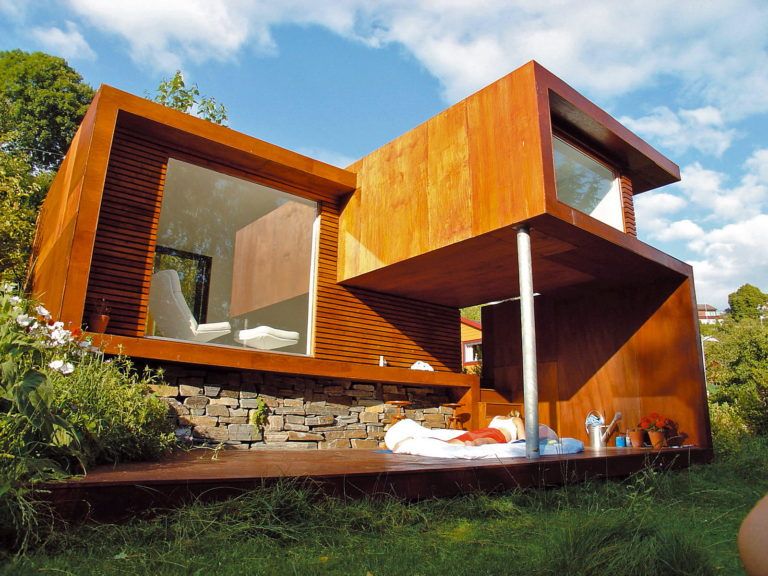Trees with fall color
8 Trees that Flaunt Brilliant Fall Color
Autumn is “leaf season,” nature’s annual color festival. Environmental factors and the genetic makeup of the trees determine the intensity and times of peak color, with factors varying from tree to tree and region to region.
Here are 8 of our favorite trees for fall color. These trees will also provide spring color, shade, privacy, and wildlife habitat.
- Black Tupelo
Nyssa sylvatica
Called “one of the best and most consistent native trees for fall color” by tree expert Michael Dirr, the black tupelo is a terrific landscaping choice. Displaying various hues of yellow, orange, bright red and purple—often on the same branch—its foliage is a stand-out of the autumn season. Even the distinctive bark, which resembles alligator hide, adds visual and textural interest.
And while its blooms may not seem noteworthy, bees will be very appreciative of the presence of this tree, as it serves as an important late-spring food source.
Hardiness zones 4-9.
- Ginkgo
Ginkgo biloba
Hailed as “undoubtedly one of the most distinct and beautiful of all deciduous trees,” the ginkgo certainly stands out. Unique, fan-shaped leaves turn a stunning yellow color in the fall. It can tolerate many urban conditions including heat, air pollution, salt and confined spaces. And it establishes easily.
This tree also comes with a bit of history. It is a living fossil, with the earliest leaf fossils dating from 270 million years ago.
Hardiness zones 3-8.
- Shumard Oak
Quercus shumardii
A stately, strong and long-lived tree with beautiful fall color, the Shumard oak is a great selection for yards. This adaptable species has been successfully grown in urban areas where air pollution, poor drainage, compacted soil, and/or drought are common, making it a fine choice for street trees as well.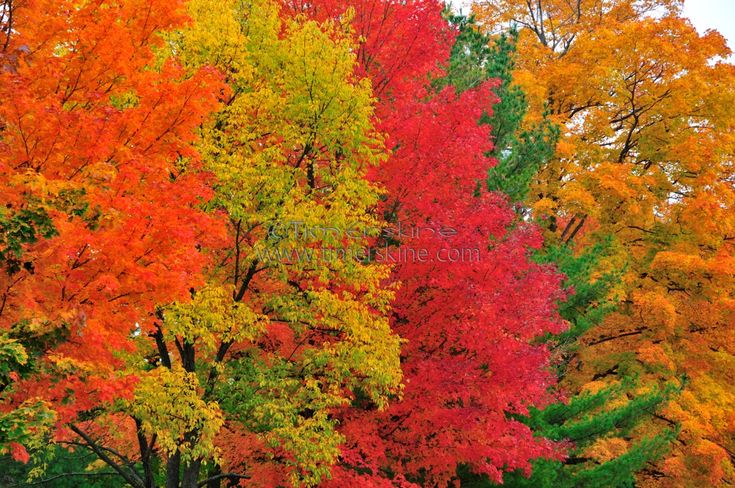
While this tree is favored by homeowners, deer and squirrels also love its small acorns.
Hardiness zones 5-9.
Read: Tree Care Tips for Fall Planting
- Red Rocket crapemyrtle
Lagerstroemia indica ‘Whit IV’
This stunning shrub is renowned for its showy flowers, beautiful bark, fast growth and tolerance of soil conditions. The petals are wrinkled like crepe paper, adding to its appeal. The red rocket crapemyrtle also adds ornamental value to landscaping in all seasons, and it is considered one of the fastest growing crapemyrtles—shooting up as much as 5′ per year.
Whether you’re looking for a standalone plant or something to incorporate as part of a mixed border, the red rocket crapemyrtle could be the answer.
Hardiness zones 7-9.
- Kentucky coffeetree
Gymnocladus dioicus
Drought-resistant. Tolerant of pollution.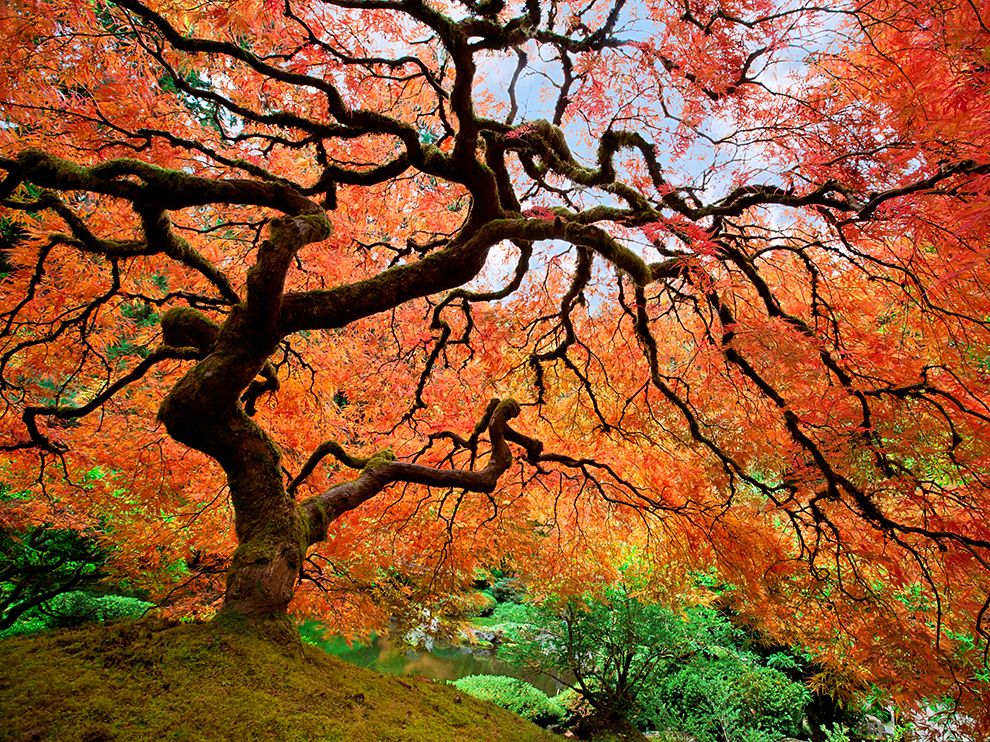 Adaptable to a variety of soils. With its reputation as a tough species, the Kentucky coffeetree is an excellent choice for parks, golf courses and other large areas. It is also widely used as an ornamental or street tree.
Adaptable to a variety of soils. With its reputation as a tough species, the Kentucky coffeetree is an excellent choice for parks, golf courses and other large areas. It is also widely used as an ornamental or street tree.
The tree’s picturesque profile stands out in all seasons and can be attributed to a unique growth habit of coarse, ascending branches that often form a narrow crown. Tree expert Michael Dirr pointed out that there are “certainly no two exactly alike.”
Hardiness zones 3-8.
- Sugar maple
Acer saccharum
The sugar maple is one of America’s best-loved trees. In fact, more states have claimed it as their state tree than any other single species—for New York, West Virginia, Wisconsin and Vermont, the Maple Tree stands alone.
While commercially planted for its delicious syrup and value as lumber, this maple tree makes a great addition to any yard or park. And one of its most prominent features is amazing fall color.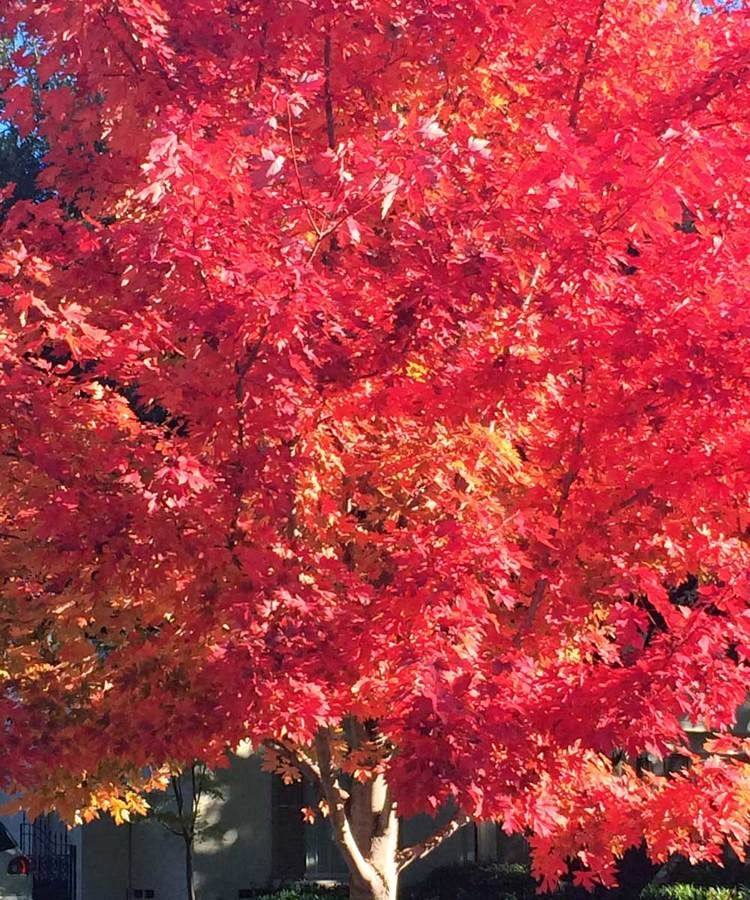 As the seasons change, the leaves turn vibrant shades of yellow, burnt orange and red.
As the seasons change, the leaves turn vibrant shades of yellow, burnt orange and red.
Hardiness zones 3-8.
Read: Designing a Landscape with Trees
- Red Maple
Acer rubrum
Red maple is one of the best named of all trees, featuring something red in each of the seasons—buds in winter, flowers in spring, leafstalks in summer, and brilliant foliage in autumn. This pageant of color, along with the red maple’s relatively fast growth and tolerance to a wide range of soils, makes it a widely planted favorite.
The natural range of red maple begins roughly at the eastern edge of the Great Plains north to Lake Superior, extending eastward to the Atlantic. But homeowners and urban foresters are growing this tree across the United States.
Hardiness zones 3-9.
- Sourwood
Oxydendrum arboretum
John Ruter, University of Georgia, Bugwood.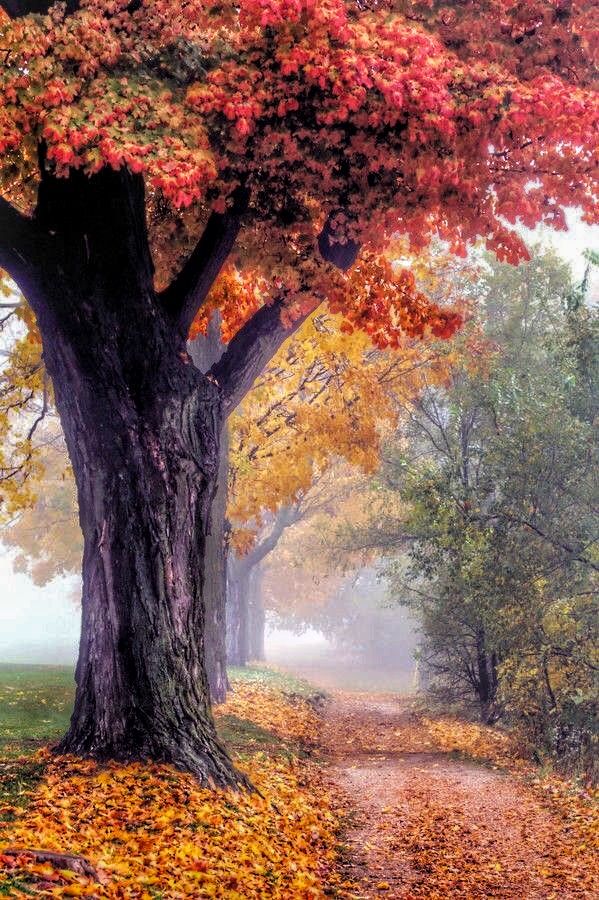 org
org
A medium-sized tree, the sourwood shines in the summer and fall. Its midsummer flowers appear like lilies-of-the-valley, are highly fragrant and contrast nicely against the green foliage. Then in the fall, leaves turn intensely beautiful shades of brilliant crimson, purplish-red and sometimes yellow. This tree shines in landscaping as a specimen in a lawn, a garden feature, an ornamental addition to larger trees or a clump in a large, open space.
And for honey lovers, the sourwood offers an additional bonus. Honey produced from the flowers of this tree is considered by many to be unmatched by clover, orange blossom, fireweed or any other honey.
Hardiness zones 5-9.
Fall ColorFall Foliage
12 Trees With Brilliant Fall Color
By
David Beaulieu
David Beaulieu
David Beaulieu is a landscaping expert and plant photographer, with 20 years of experience. He was in the nursery business for over a decade, working with a large variety of plants. David has been interviewed by numerous newspapers and national U.S. magazines, such as Woman's World and American Way.
David has been interviewed by numerous newspapers and national U.S. magazines, such as Woman's World and American Way.
Learn more about The Spruce's Editorial Process
Updated on 11/07/22
Reviewed by
Julie Thompson-Adolf
Reviewed by Julie Thompson-Adolf
Julie Thompson-Adolf is a master gardener and author. She has 13+ years of experience with year-round organic gardening; seed starting and saving; growing heirloom plants, perennials, and annuals; and sustainable and urban farming.
Learn more about The Spruce's Review Board
Fact checked by
Jessica Wrubel
Fact checked by Jessica Wrubel
Jessica Wrubel has an accomplished background as a writer and copy editor, working for various publications, newspapers and in public libraries assisting with reference, research and special projects. In addition to her journalism experience, she has been educating on health and wellness topics for over 15 years in and outside of the classroom.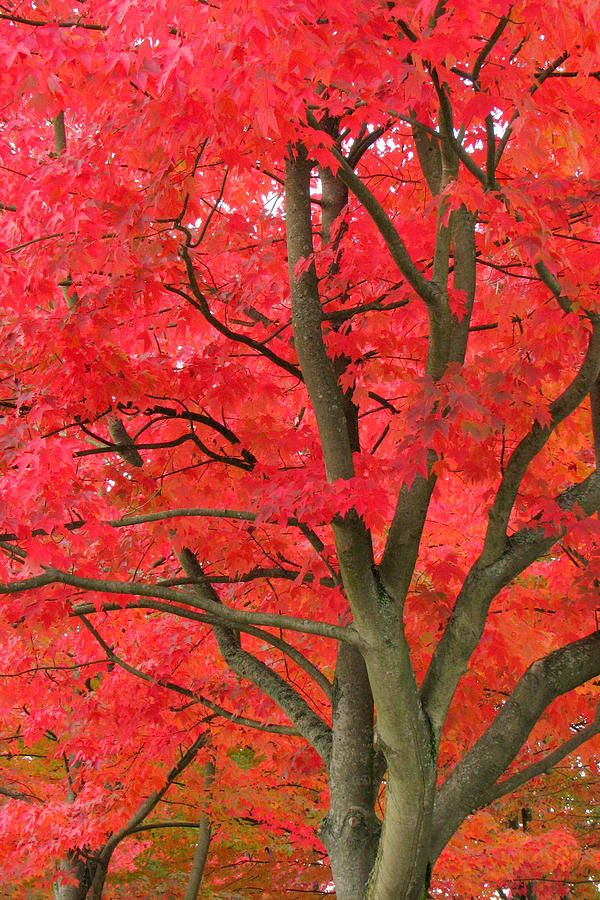
Learn more about The Spruce's Editorial Process
The Spruce / Paige McLaughlin
A number of deciduous trees offer spectacular fall color—but fall is only one season of the year, and the best landscape trees will offer something of notable value for other seasons, too. For example, some Japanese tree varieties might offer vibrant autumn color while a maple tree might also be a great source of sap for making syrup.
In other words, don't settle for foliage that is spectacular only in fall, when you could have a tree that also offers colorful spring flowers or fruit that feeds birds in summer. Here are 12 types of deciduous trees that provide both great autumn color and have at least one other notable feature.
-
01 of 12
The Spruce / David Beaulieu
The honeylocust typically produces bright yellow fall foliage, but the 'Sunburst' cultivar is even more interesting because its leaves feature a touch of green mixed into the yellow.
 It also has golden-yellow foliage in the spring, which then transitions to deep green in the summer before returning to golden yellow in fall.
It also has golden-yellow foliage in the spring, which then transitions to deep green in the summer before returning to golden yellow in fall. As an additional benefit, it's also a good street tree, tolerant of drought, road salt, and pollution. Unlike other honeylocust trees, it is thornless and seedless. 'Sunburst' grows to about 40 feet.
- USDA Growing Zones: 4 to 9
- Color Variation: Golden spring foliage, green summer foliage, yellow-and-green fall color
- Sun Exposure: Full sun
- Soil Needs: Rich, moist, well-drained soil
-
02 of 12
The Spruce / David Beaulieu
River birch is a colorful tree in the fall, but to stop there would be to shortchange it. The river birch's best feature is not its fall color, but rather its fascinating peeling bark, which is there for you to enjoy during winter, spring, summer, and fall. As an added benefit, river birch trees—which grow 30 to 60 feet tall—tolerate wet areas better than many other plants.
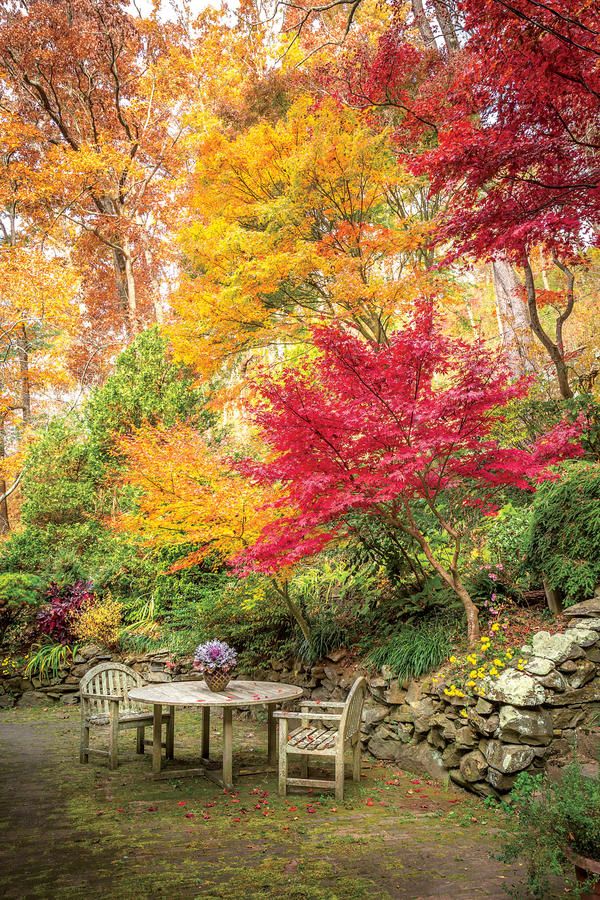
River birch may be one of the more popular birch trees used in landscaping in North America but consider other types of birch, too. The classic paper birch displays bark with white color, while yellow birch offers an interesting golden bark. Other birches have a weeping form. All of these trees display beautiful yellow leaves in autumn.
- USDA Growing Zones: 4 to 9
- Color Variation: Dark green leaves turning yellow in fall; attractive peeling bark in white and reddish-brown
- Sun Exposure: Full sun to part shade
- Soil Needs: Moist, well-drained soil; tolerates wet conditions
-
03 of 12
The Spruce / David Beaulieu
The spectacular scarlet fall color is just one great feature of the black gum tree (sometimes known as tupelo). Growing up to 80 feet, this is another tree with excellent tolerance for wet soil, even adapting to standing water. It has blackish fruits that are a favorite food of birds.
 Adding to the beauty of the fall color is the shininess of the leaves. If you are buying a black gum tree intending to achieve optimal fall color in your landscape, select the 'Autumn Cascades' cultivar, which has a weeping growth habit.
Adding to the beauty of the fall color is the shininess of the leaves. If you are buying a black gum tree intending to achieve optimal fall color in your landscape, select the 'Autumn Cascades' cultivar, which has a weeping growth habit. - USDA Growing Zones: 3 to 9
- Color Variation: Dark green spring and fall leaves; bright scarlet fall color
- Sun Exposure: Full sun to part shade
- Soil Needs: Medium-moisture to wet soil
-
04 of 12
The Spruce / Evgeniya Vlasova
Maple trees are the royals of the fall foliage world in North America. Tourists, who are dubbed "leaf peepers," sometimes drive hundreds of miles to locations such as the White Mountains of New Hampshire to witness the magnificent fall foliage displays. Different types of maples display brilliant yellow, red, orange, or burgundy fall colors, and the color of an individual tree can sometimes vary from year to year.
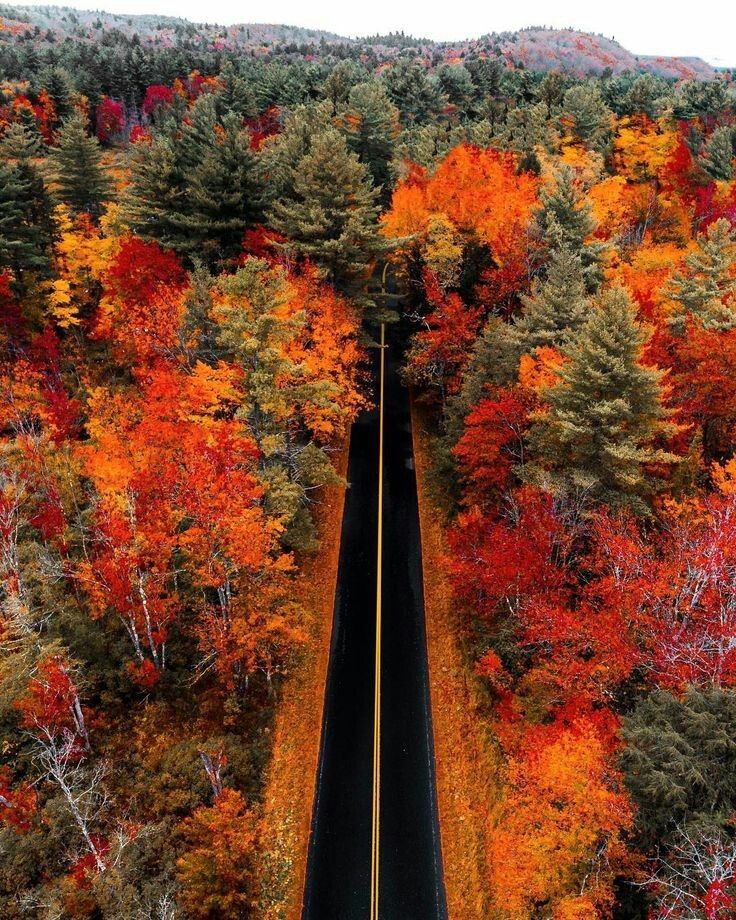
Within the Acer genus, the sugar maples (Acer sacharum) offer the unique benefit of sap that can be tapped and boiled down to make delicious maple syrup. Growing 40 to 120 feet, sugar maples are relatively slow-growing trees with large leaves that are good as yard or street trees.
- USDA Growing Zones: 3 to 8
- Color Variation: Medium green spring and summer foliage; yellow, orange, or red fall color
- Sun Exposure: Full sun to part shade
- Soil Needs: Medium-moisture, well-drained soil
-
05 of 12
The Spruce / David Beaulieu
Many varieties of Japanese maple trees boast colorful leaves not just in autumn, but during other seasons as well. Most types grow 15 to 25 feet, but 'Crimson Queen' Japanese maple is a dwarf type favored by lovers of weeping trees. The finely lobed leaves of Japanese maple are especially attractive from a close distance.
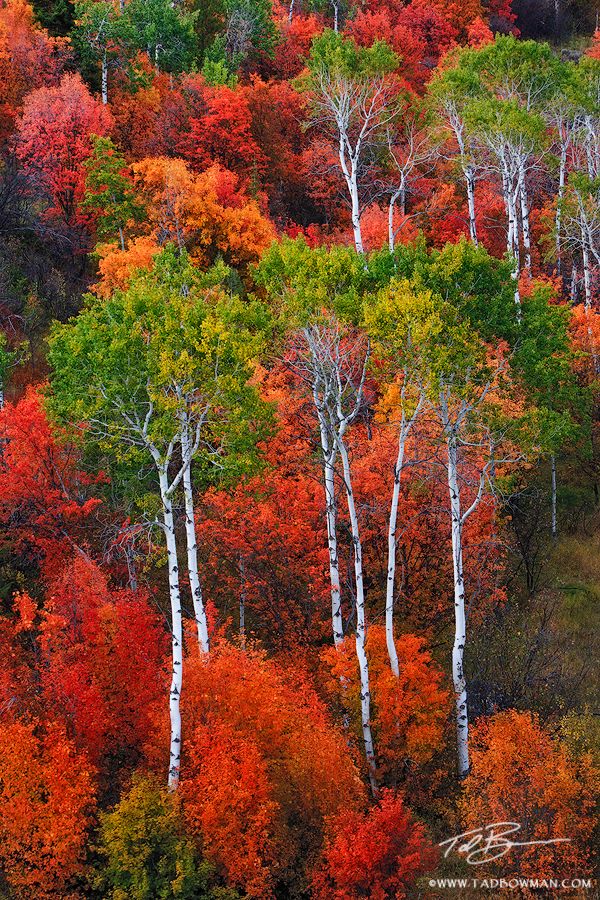 This species is popular for Japanese garden designs and with aficionados of the art of bonsai. The leaves add gorgeous texture in the garden, as well as color.
This species is popular for Japanese garden designs and with aficionados of the art of bonsai. The leaves add gorgeous texture in the garden, as well as color. - USDA Growing Zones: 5 to 8
- Color Variation: Light green, dark green, or burgundy summer foliage; yellow, red-purple, or bronze fall color
- Sun Exposure: Full sun to part shade
- Soil Needs: Rich, moist soil; prefers slightly acidic soil
-
06 of 12
The Spruce / Evgeniya Vlasova
Several species of the Carya genus of hickory trees exhibit attractive golden brown fall color, but the shagbark hickory also has bark that exfoliates and peels in long strips that give the tree great winter interest. This species of hickory also provides edible nuts, and its wood is excellent as fuel for smoking meats or for use in furniture. The shagbark hickory grows 70 to 90 feet tall and provides plenty of shade.
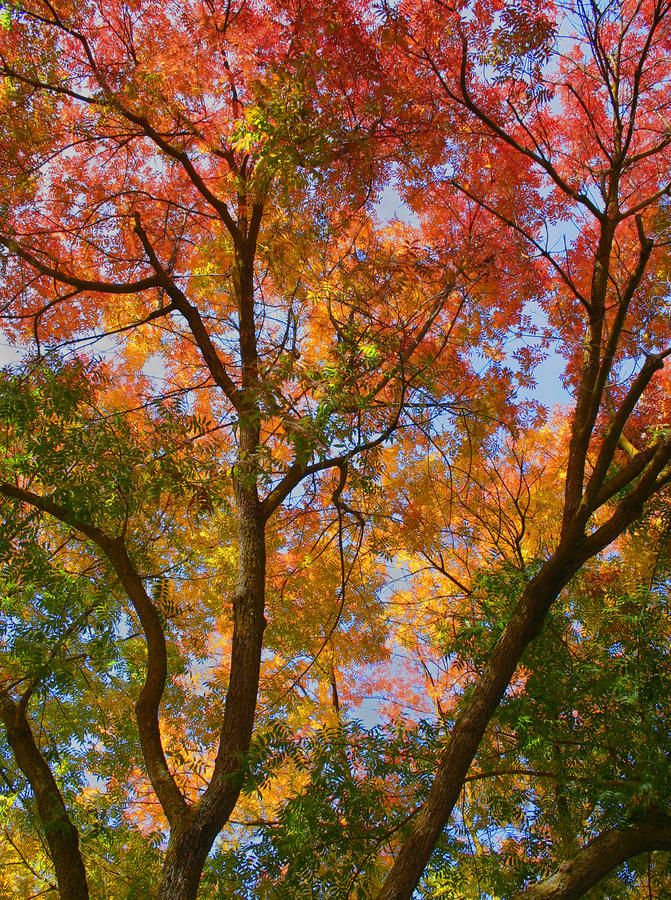
- USDA Growing Zones: 4 to 8
- Color Variation: Yellow-green spring and summer foliage; golden-brown fall color
- Sun Exposure: Full sun to part shade
- Soil Needs: Moist, well-drained loam
-
07 of 12
The Spruce / Evgeniya Vlasova
Beech trees and shagbark hickory trees have several things in common: lovely yellow-golden leaves in fall, beautiful bark, and edible nuts. However, beech trees have two notable advantages when it comes to fall foliage: They change color later in the season, and they hold their leaves for a longer period of time. Two species of beech, American beech (Fagus grandifolia) and European beech (F. sylvatica), also have attractive gray bark that adds winter interest. One cultivar, tricolor beech (F. sylvatica 'Tricolor'), has colorful variegated leaves that are attractive in spring and summer, as well as in fall.
 Beech trees grow to a mature height of 20 to 80 feet, depending on the variety.
Beech trees grow to a mature height of 20 to 80 feet, depending on the variety. - USDA Growing Zones: 3 to 9, depending on species
- Color Variation: Dark green summer foliage, golden bronze fall color
- Sun Exposure: Full sun to part shade
- Soil Needs: Rich, moist, well-drained soil
-
08 of 12
The Spruce / Evgeniya Vlasova
American sweetgum can be as colorful in fall as any tree—at least when climate and conditions cooperate. You may not get such a spectacular show every autumn, but when you do, you will revel in the mixture of colors: red, orange, purple, gold, yellow, and green. The gumballs produced by the sweetgum is of interest to those interested in crafts, as they can be used in wreaths, kissing balls, and other projects. If you are not a crafty person, though, you might want to choose a cultivar that doesn't produce the messy gumballs. Sweetgum trees typically grow to be 60 to 80 feet tall with large leaves that make for good shade trees.
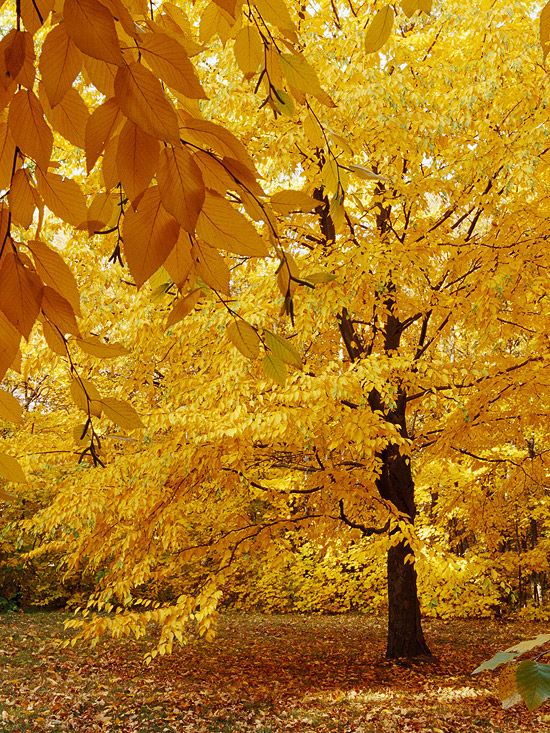
- USDA Growing Zones: 4 to 9
- Color Variation: Dark-green summer leaves; yellow, orange, purple, and red fall colors
- Sun Exposure: Full sun
- Soil Needs: Medium-moisture, well-drained soil; does not do well in alkaline soil
-
09 of 12
D-Ozen / Getty Images
The purple-leaf sand cherry is a large shrub often trained as a small tree. It is aptly named, as the reddish-purple foliage is consistent throughout the summer. However, this specimen also has beautiful pinkish-white flowers in spring, leading to blackish-blue fruit that attracts birds in late summer. Its fall color is an attractive greenish-bronze, making this a tree with excellent year-round interest. This is a hybrid form of cherry that is somewhat short-lived, around 10 years as the typical lifespan.
- USDA Growing Zones: 2 to 8
- Color Variation: Reddish purple summer foliage; greenish-bronze fall color
- Sun Exposure: Full sun
- Soil Needs: Rich, moist, well-drained soil
-
10 of 12
The Spruce / Evgeniya Vlasova
Dogwood trees such as flowering dogwood (C.
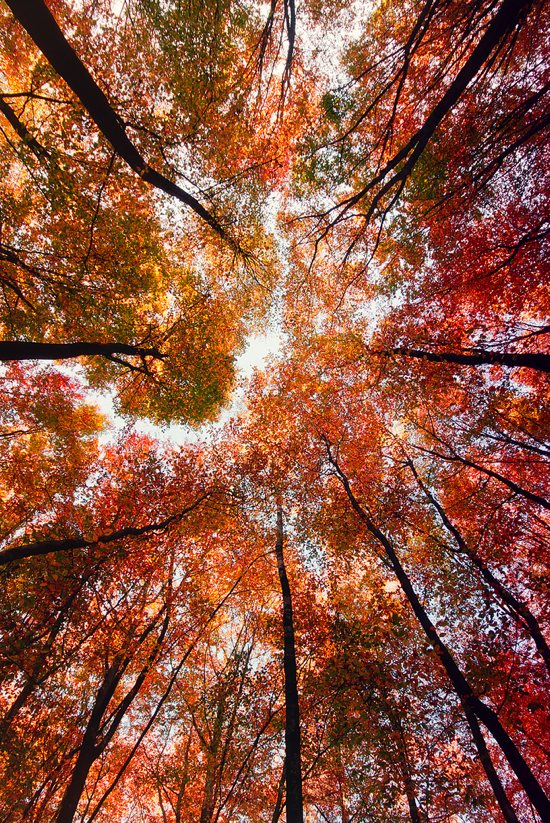 florida) and Japanese dogwood (C. kousa) boast terrific spring interest on account of the flowers they bear, while red-twig dogwood (C. sericea) has bright red stems that provide winter interest. Many folks sell dogwood short when it comes to its fall color, but the foliage is quite attractive, with colors ranging from orange to reddish-purple. Like black gum, dogwoods bear fruit that is eaten by wild birds. In size, dogwoods range from dwarf shrubs to small trees growing to about 25 feet tall, depending on species and cultivar.
florida) and Japanese dogwood (C. kousa) boast terrific spring interest on account of the flowers they bear, while red-twig dogwood (C. sericea) has bright red stems that provide winter interest. Many folks sell dogwood short when it comes to its fall color, but the foliage is quite attractive, with colors ranging from orange to reddish-purple. Like black gum, dogwoods bear fruit that is eaten by wild birds. In size, dogwoods range from dwarf shrubs to small trees growing to about 25 feet tall, depending on species and cultivar. - USDA Growing Zones: 5 to 9, depending on species
- Color Variation: Dark green summer foliage; orange to reddish-purple fall color
- Sun Exposure: Full sun to part shade
- Soil Needs: Rich, moist soil; prefers slightly acidic soil
-
11 of 12
The Spruce / Evgeniya Vlasova
Smooth sumac (Rhus glabra) and staghorn sumac (R.
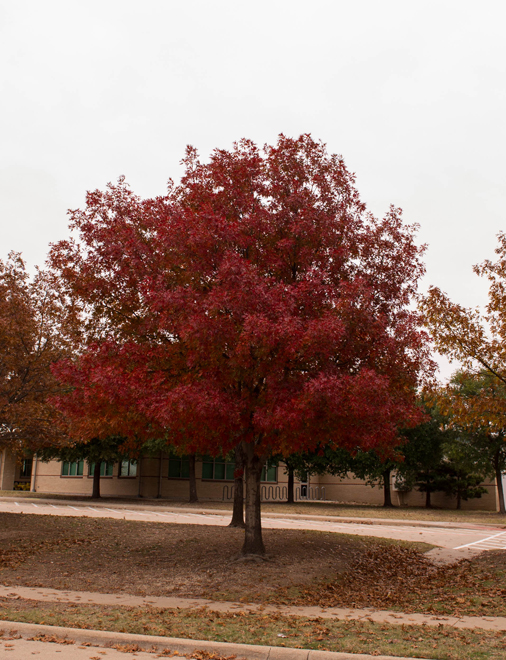 typhina) are the most common landscape varieties, both growing 10 to 15 feet tall. These non-poisonous varieties can be considered potential landscape trees because they provide splendid autumn foliage and are easy to grow.
typhina) are the most common landscape varieties, both growing 10 to 15 feet tall. These non-poisonous varieties can be considered potential landscape trees because they provide splendid autumn foliage and are easy to grow. In addition to the spectacular fall color, sumac has been used for culinary purposes, for erosion control, and as a windbreak. Along with black gum and dogwood, you can add this plant to the list of trees that feed wild birds with their berries.
- USDA Growing Zones: 3 to 9
- Color Variation: Bright orange to red fall color; red, berry-like drupes
- Sun Exposure: Full sun to part shade
- Soil Needs: Dry to medium moisture, well-drained soil
Warning
Sumac can spread aggressively unless supervised.
-
12 of 12
The Spruce / David Beaulieu
The colorful fall foliage of quaking aspen is almost synonymous with autumn in the American West, but the proclivity of its leaves to tremble in the breeze is as famous as its golden-yellow color.
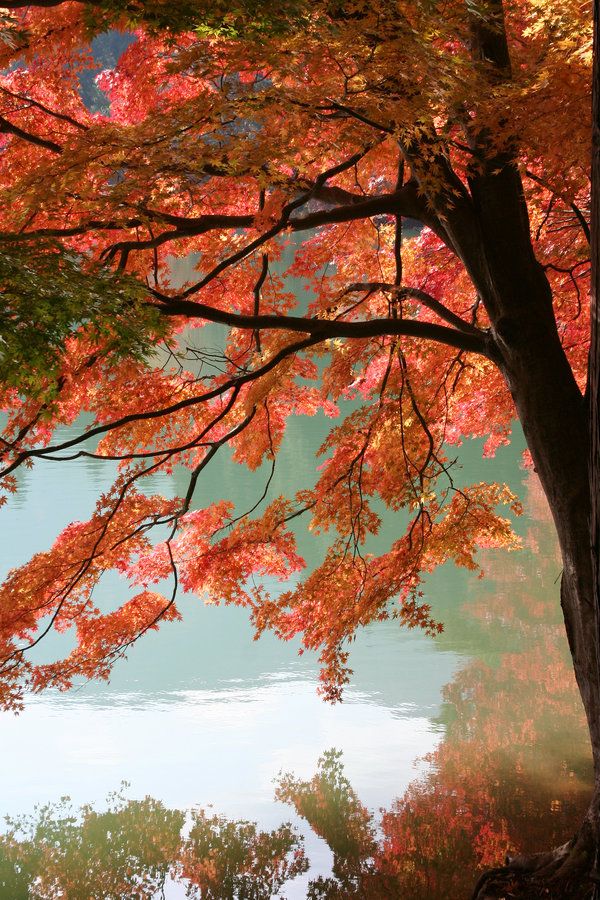 Being able to listen to and admire the sound is an added benefit to growing this plant. The leaves add movement to the garden. Quaking aspens also have an attractive, smooth whitish-colored bark that offers year-round interest. The trees grow to 40 to 50 feet at maturity.
Being able to listen to and admire the sound is an added benefit to growing this plant. The leaves add movement to the garden. Quaking aspens also have an attractive, smooth whitish-colored bark that offers year-round interest. The trees grow to 40 to 50 feet at maturity. - USDA Growing Zones: 1 to 6
- Color Variation: Golden-yellow fall foliage; brilliant white bark
- Sun Exposure: Full sun
- Soil Needs: Moist, well-drained soil
12 Seasonal Bush and Shrub Species With Red Leaves
Article Sources
The Spruce uses only high-quality sources, including peer-reviewed studies, to support the facts within our articles. Read our editorial process to learn more about how we fact-check and keep our content accurate, reliable, and trustworthy.
Carya ovata. NC State Extension.
Rhus glabra. NC State Extension.
10 autumn trees for the garden
When autumn comes, there are many beautiful trees.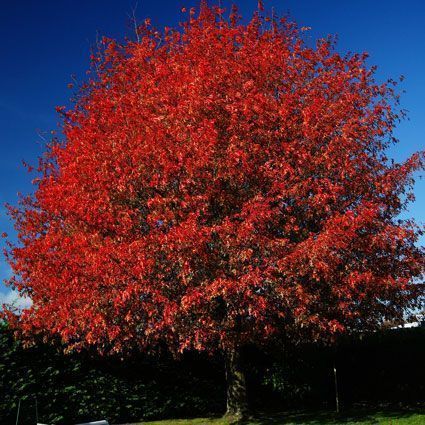 The green that dresses them in spring and summer becomes yellow, orange, red... or one of its many shades, brightening the landscape in much the same way, maybe even more than the flowers in spring.
The green that dresses them in spring and summer becomes yellow, orange, red... or one of its many shades, brightening the landscape in much the same way, maybe even more than the flowers in spring.
The vast majority of them are deciduous, that is, they lose their leaves at some time of the year. Those who live in temperate regions are left without them in the winter, but before that we will be able to contemplate their beauty for several weeks. Would you like to have it?
Tree of Jupiter (
Lagerstromia )- Image - Wikimedia/Captain Tucker
El jupiter tree, also known as crepe or lila de las Indias, is a deciduous tree native to Asia that reaches 8 meters in height. It is often kept in small gardens and even in pots, as it tends to grow more like a shrub branching from the base and also tolerates pruning well. In spring it has flowers of great ornamental value, pink or white, and in autumn its leaves turn red before falling off. . It grows in soils with a low pH, i.e. 4 to 6, and can be found in both full sun and partial shade. withstands up to -23ºC.
In spring it has flowers of great ornamental value, pink or white, and in autumn its leaves turn red before falling off. . It grows in soils with a low pH, i.e. 4 to 6, and can be found in both full sun and partial shade. withstands up to -23ºC.
Japanese maple, variety Katsura (
palmate maple cv Katsura)- Image - GardenTags.com
El Japanese maple This is a tree or small tree native to Southeast Asia that can reach a height of 1 to 12 meters, depending on the variety and above all the variety. And if we talk about the latter, then Katsura is considered one of the most beautiful autumn cities. Its palmate leaves change color from green to orange-reddish before falling off. . Best of all, it is a tree that can be kept in a pot, as although it can reach 5 meters in height, it tolerates pruning well. Of course, it grows well only in temperate climates, on acidic soils or substrates. Maintains temperatures down to -18ºC.
Maintains temperatures down to -18ºC.
Real maple (
Norway maple )- Image - Flickr / FD Richards
- Image - Wikimedia / Włodzimierz Wysocki
True Norway maple This is a deciduous tree that grows in Europe, the Caucasus and Asia Minor. In Spain it can be found in the Pyrenees and also, of course, in some gardens. It reaches a height of 35 meters, forming a strong trunk, branching off several meters from the ground. Its crown is wide, about 4-5 meters, and consists of yellowish green leaves that turn yellow or reddish in autumn . Grows in soils rich in organic matter, well drained. Withstands up to -20ºC.
Subscribe to our Youtube channel
Witch Hazel (
Witch Hazel Virginiana )- Image - Flickr / Plant Image Library
The tree known as witch hazel This is a deciduous plant native to the USA.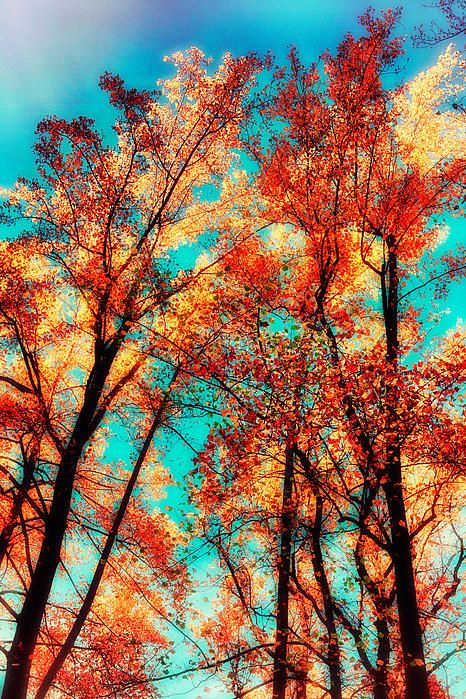 It grows from 2 to 7 meters in height, so it is ideal for growing in small gardens and in pots. Its leaves are simple, with a slightly serrated edge, turning yellow in autumn. . You should also know that it produces yellow flowers in spring, clustered in inflorescences that emerge from the branches, which you can enjoy all year round. Of course, this requires acidic lands and a temperate climate. Withstands up to -20ºC.
It grows from 2 to 7 meters in height, so it is ideal for growing in small gardens and in pots. Its leaves are simple, with a slightly serrated edge, turning yellow in autumn. . You should also know that it produces yellow flowers in spring, clustered in inflorescences that emerge from the branches, which you can enjoy all year round. Of course, this requires acidic lands and a temperate climate. Withstands up to -20ºC.
Marsh Cypress (
Taxodium two-row )El Marsh Cypress, or Bald Cypress, is a conifer native to the United States. It grows up to 40 meters in height and has a pyramidal crown, consisting of needle-shaped leaves. They are green except in autumn when they turn yellow or reddish. . It lives very well in waterlogged soils, as well as in a temperate climate. Withstands low and negative temperatures down to -30ºC.
Ginkgo (
Ginkgo biloba )- Image - Wikimedia / Cayambe
El ginkgo or shield tree, a very slow growing deciduous tree native to Asia.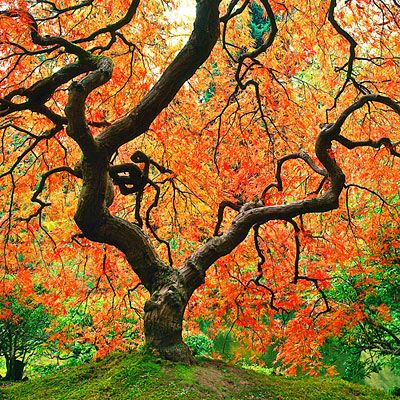 Reaches a height of 35 meters. Its crown is relatively narrow and somewhat pyramidal in shape, and Consists of light green leaves, but in autumn, when it starts to cool, they turn yellow. . This is a primitive species, a living fossil that has existed on Earth for 250 million years. It is heat resistant up to 38ºC as well as frost down to -20ºC.
Reaches a height of 35 meters. Its crown is relatively narrow and somewhat pyramidal in shape, and Consists of light green leaves, but in autumn, when it starts to cool, they turn yellow. . This is a primitive species, a living fossil that has existed on Earth for 250 million years. It is heat resistant up to 38ºC as well as frost down to -20ºC.
Common beech (
Fagus Sylvatica )- Image - Flickr / Peter O'Connor aka anemoneprojectors
El The common beech is a tree worth having in a large garden. Reaches a height of 35 to 40 meters and develops a crown that can be very wide when kept as an isolated specimen, up to 4-5 meters. Its leaves are simple, usually green, although there are varieties in which they are brown ( Fagus sylvatica var atropurpurea ) and dark green with pink margins ( Fagus Sylvatica cultivar Roseomarginata). Turns yellow or reddish in autumn .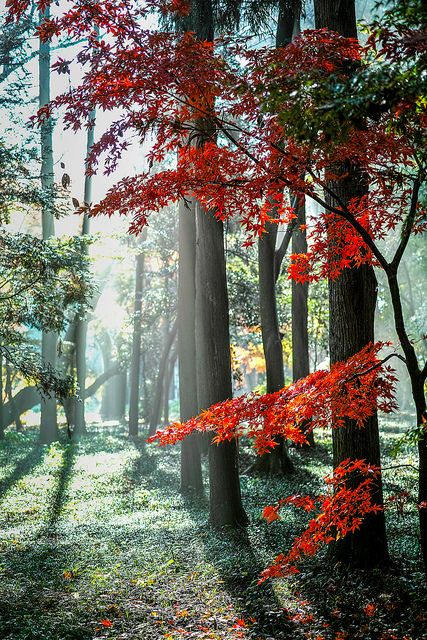 It needs a cool temperate climate all year round, with temperatures no higher than 35°C in summer and snowfall in winter, and acidic soils. Maintains temperatures down to -20ºC.
It needs a cool temperate climate all year round, with temperatures no higher than 35°C in summer and snowfall in winter, and acidic soils. Maintains temperatures down to -20ºC.
American Ash 'Autumn Applause' (
Fraxinus Americana cv Autumn Applause)- Image - VDBerk.com
- Image - Thuilleaux.com
El American Ash This tree, as the name suggests, is native to the Americas, particularly from Quebec to northern Florida. It is deciduous, reaches a height of 35 meters. It has a wide rounded crown with elongated green leaves. Autumn Applause is highly recommended for its pronounced autumn red color. . It withstands frosts down to -20ºС, but warm temperatures of 30-35ºС do not harm it.
Sweetgum (
liquidambar tar)- Image - Wikimedia/Kugamazog
- Image - Flickr/Kew on Flickr
El sweet gum This is a deciduous tree native to America, growing from 20 to 35 meters (sometimes 41 meters, but this is very rare). The trunk is straight, up to 1 meter in diameter, with a relatively narrow crown, about 4 meters in diameter at the base. The leaves are very reminiscent of maple leaves: They are palmately lobed and green, except in autumn when they turn yellowish or reddish. It withstands heat very well up to 38ºC if there is no shortage of water, and frosts down to -18ºC. It should not be planted in alkaline soils as its leaves will become chlorotic due to lack of iron.
The trunk is straight, up to 1 meter in diameter, with a relatively narrow crown, about 4 meters in diameter at the base. The leaves are very reminiscent of maple leaves: They are palmately lobed and green, except in autumn when they turn yellowish or reddish. It withstands heat very well up to 38ºC if there is no shortage of water, and frosts down to -18ºC. It should not be planted in alkaline soils as its leaves will become chlorotic due to lack of iron.
Virginia sumac (
Olenehorn sumac )- Image - Flickr/Babij
Virginia sumac is a deciduous tree native to Canada and the USA. It reaches a height of 3 to 10 meters and has a crown about 3 meters in diameter. The leaves are pinnate, composed of leaflets with a serrated edge. They remain green most of the year, but in autumn they are bright yellow . It withstands heat well up to 38ºC, as well as frosts down to -30ºC.
Which of these autumn trees did you like best?
Trees and shrubs in autumn.
 Autumn changes. Why leaves turn yellow and fall off.
Autumn changes. Why leaves turn yellow and fall off. When the days become shorter and the sun no longer generously shares its warmth with the earth, one of the most beautiful seasons of the year comes - autumn. She, like a mysterious sorceress, changes the world around and fills it with rich and unusual colors. Most notably, these miracles occur with plants and shrubs. They are among the first to respond to weather changes and the onset of autumn. They have three whole months ahead of them to prepare for winter and part with their main decorations - leaves. However, at first, the trees will certainly please everyone around with tints of color and frenzy of colors, and the fallen leaves will carefully cover the earth with their veil and protect its smallest inhabitants from severe frosts.
Autumn changes with trees and shrubs, the causes of these phenomena
In autumn, one of the most important changes in the life of trees and shrubs occurs: a change in the color of foliage and leaf fall. Each of these phenomena helps them prepare for winter and survive such a harsh season.
Each of these phenomena helps them prepare for winter and survive such a harsh season.
For deciduous trees and shrubs, one of the main problems in the winter season is the lack of moisture, so in the autumn all useful substances begin to accumulate in the roots and core, and the leaves fall off. Leaf fall helps not only to increase moisture reserves, but also to save them. The fact is that the leaves evaporate the liquid very strongly, which is very wasteful in winter. Coniferous trees, in turn, can afford to show off with needles in the cold season, since the evaporation of liquid from them is very slow.
Another cause of leaf fall is the high risk for branches to be broken under the pressure of the snow cap. If fluffy snow fell not only on the branches themselves, but also on their leaves, they would not withstand such a heavy burden.
In addition, many harmful substances accumulate in the leaves over time, which can only be eliminated during leaf fall.
One of the recently uncovered mysteries is the fact that deciduous trees placed in a warm environment, and therefore not in need of preparation for cold weather, also shed their leaves. This suggests that leaf fall is not so much associated with the change of seasons and preparation for winter, but is an important part of the life cycle of trees and shrubs.
This suggests that leaf fall is not so much associated with the change of seasons and preparation for winter, but is an important part of the life cycle of trees and shrubs.
Why do leaves change color in autumn?
With the onset of autumn, trees and shrubs decide to change the emerald color of their leaves for brighter and more unusual colors. At the same time, each tree has its own set of pigments - "paints". These changes are due to the fact that the leaves contain a special substance, chlorophyll, which converts light into nutrients and gives the foliage a green color. When a tree or shrub begins to store moisture, and it no longer reaches the emerald leaves, and the sunny day becomes much shorter, chlorophyll begins to break down into other pigments, which give the autumn world crimson and golden tones.
The brightness of autumn colors depends on weather conditions. If the weather is sunny and relatively warm, then the autumn leaves will be bright and variegated, and if it rains often, then brown or dull yellow.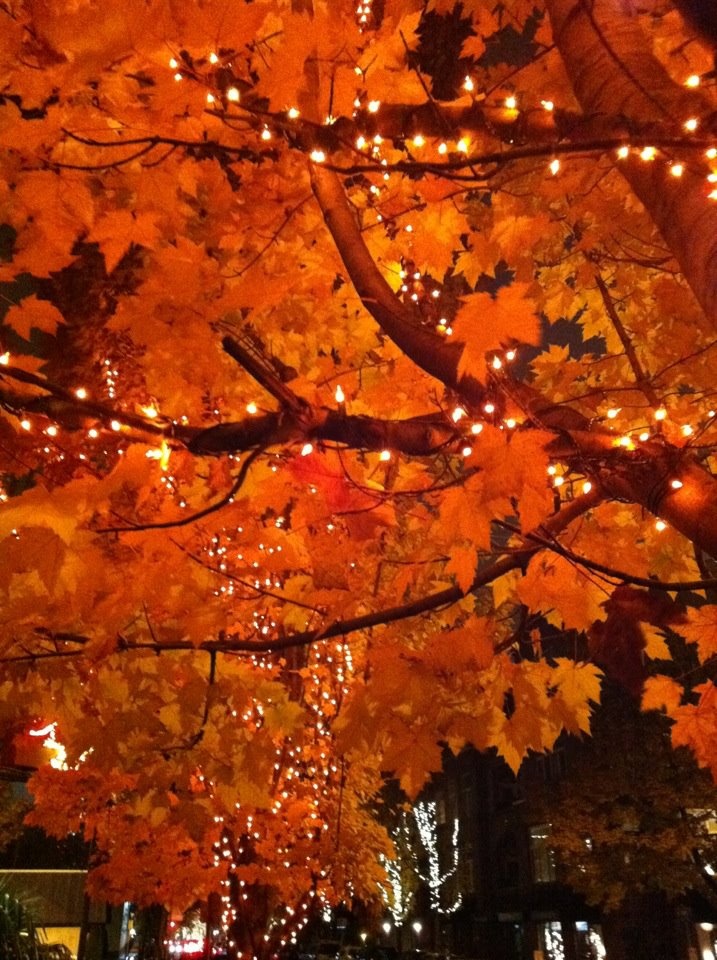
How leaves of different trees and shrubs change color in autumn
The riot of colors and their unearthly beauty in autumn is due to the fact that the foliage of all trees has different combinations of colors and shades. The most common purple color of the leaves. Maple and aspen can boast of crimson color. These trees are very beautiful in autumn.
Maple
Aspen
Birch leaves become light yellow, and oak, ash, linden, hornbeam and hazel become brownish yellow.
Birch
oak
Jasen
linden
Grab
Oreshchik (hazel)
Topol quickly dumps its foliage, it only begins .
Poplar
Shrubs also please with variety and brightness of colors. Their foliage turns yellow, purple or red. Grape leaves (grape - shrub) acquire a unique dark purple color.
Barberry and cherry leaves stand out against the general background with a crimson-red tint.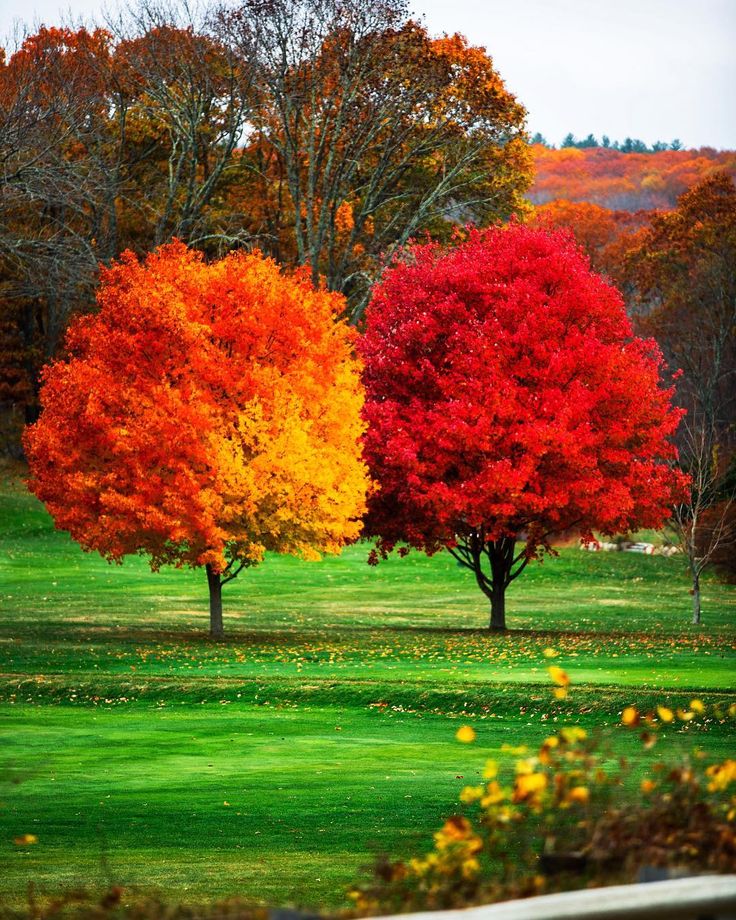
Barberry
Yellow to red rowan leaves may appear in autumn.
Rowan
Viburnum leaves turn red along with berries.
Euonymus wears purple clothes.
The red and purple hues of the leaves are determined by the anthocyanin pigment. An interesting fact is that it is completely absent in the composition of the leaves and can only be formed under the influence of cold. This means that the colder the days, the more crimson the surrounding leafy world will be.
However, there are plants that not only in autumn but also in winter retain their foliage and remain green. Thanks to such trees and shrubs, the winter landscape comes to life, and many animals and birds find their home in them. In the northern regions, such trees include trees: pine, spruce and cedar. To the south, the number of such plants is even greater. Among them, trees and shrubs are distinguished: juniper, myrtle, thuja, barberry, cypress, boxwood, mountain laurel, abelia.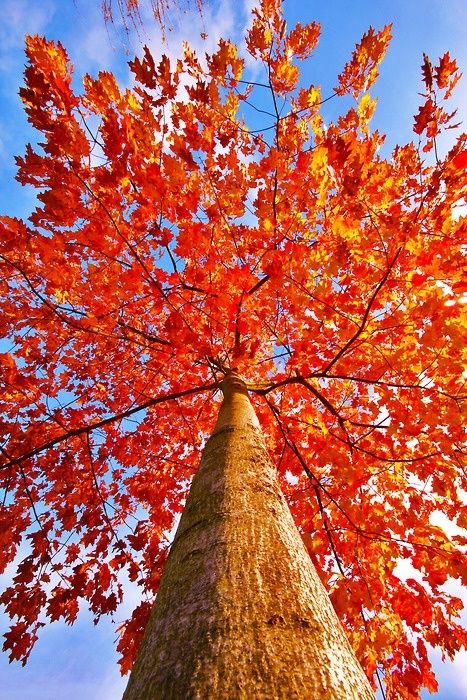
Evergreen tree - spruce
Evergreen shrub - juniper
Some deciduous shrubs also do not part with their emerald clothes. These include cranberries and cranberries. In the Far East there is an interesting wild rosemary plant, the leaves of which do not change color in autumn, but curl up into a tube in autumn and fall off.
Why do leaves fall, but no needles?
Leaves play an important role in the life of trees and shrubs. They help create and store nutrients, as well as accumulate mineral components. However, in winter, when there is an acute shortage of light, and, therefore, nutrition, the leaves only increase the consumption of useful components and cause excessive evaporation of moisture.
Coniferous plants, which most often grow in areas with a rather harsh climate, are in great need of nutrition, so they do not shed their needles that act as leaves. The needles are perfectly adapted to the cold. The needles contain a lot of chlorophyll pigment, which converts nutrients from light.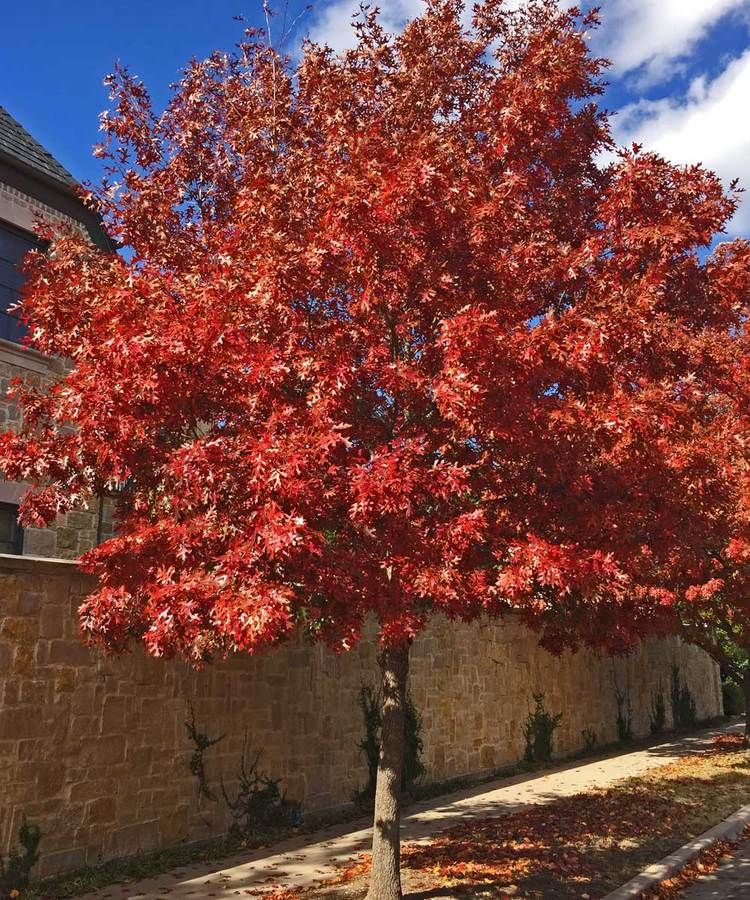 In addition, they have a small area, which significantly reduces the evaporation from their surface of much-needed moisture in winter. From the cold, the needles are protected by a special wax coating, and thanks to the substance they contain, they do not freeze even in severe frosts. The air that the needles capture creates a kind of insulating layer around the tree.
In addition, they have a small area, which significantly reduces the evaporation from their surface of much-needed moisture in winter. From the cold, the needles are protected by a special wax coating, and thanks to the substance they contain, they do not freeze even in severe frosts. The air that the needles capture creates a kind of insulating layer around the tree.
The only coniferous plant that leaves its needles for the winter is larch. It appeared in ancient times, when summers were very hot and winters were incredibly frosty. This feature of the climate led to the fact that the larch began to shed its needles and it was not necessary to protect them from the cold.
When does leaf fall end for different trees?
Leaf fall, as a seasonal phenomenon, occurs in each plant at its own time. It depends on the type of tree, its age and climate.
First of all, poplar and oak part with their leaves, then the time of mountain ash comes. The apple tree is one of the last to shed its leaves, and even in winter, it may still have a few leaves.
Poplar leaf fall begins at the end of September, and by mid-October it completely ends. Young trees retain their foliage longer and turn yellow later.
Oak begins to lose its leaves in early September and completely loses its crown in a month. If frosts begin earlier, then leaf fall occurs much faster. Along with oak leaves, acorns also begin to crumble.
Mountain ash begins its leaf fall in early October and continues to delight with its pink leaves until November 1st. It is believed that after the mountain ash parted with the last leaves, dank chilly days begin.
The leaves on the apple tree begin to turn golden by September 20th. By the end of this month, leaf fall begins. The last leaves fall from the apple tree in the second half of October.
Evergreen trees and shrubs
Evergreens and shrubs do not lose their foliage even with the onset of cold weather, as ordinary deciduous species do. Permanent leaf cover allows them to survive any weather conditions and retain the maximum supply of nutrients.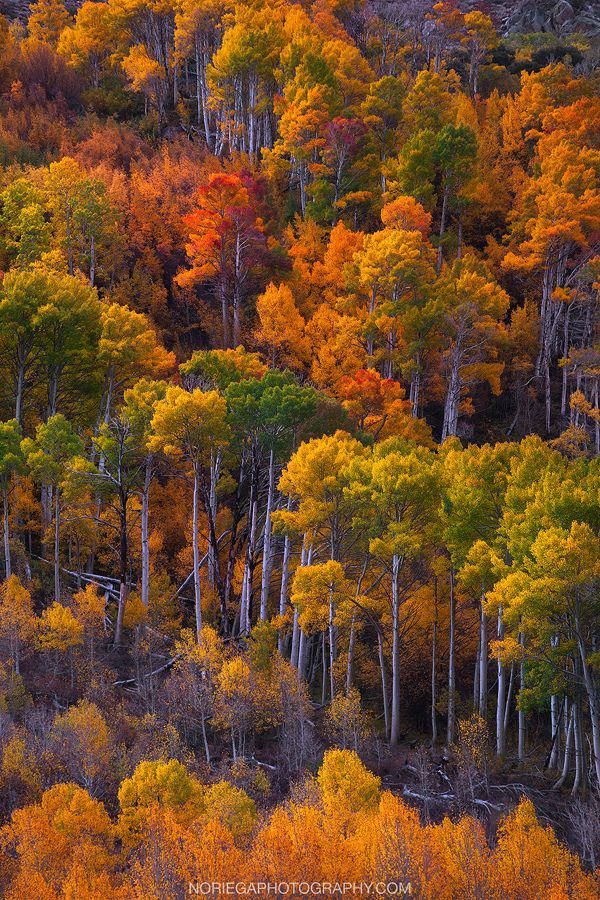 Of course, such trees and shrubs renew their leaves, but this process occurs gradually and almost imperceptibly.
Of course, such trees and shrubs renew their leaves, but this process occurs gradually and almost imperceptibly.
Evergreens do not shed all their leaves at once for several reasons. Firstly, then they do not have to spend large reserves of nutrients and energy to grow young leaves in the spring, and secondly, their constant presence ensures uninterrupted nutrition of the trunk and roots. Most often, evergreen trees and shrubs grow in areas with a mild and warm climate, where the weather is warm even in winter, however, they are also found in harsh climatic conditions. These plants are most common in tropical rainforests.
Evergreens such as cypress, spruce, eucalyptus, some types of evergreen oaks, rhodendron can be found in a wide area from harsh Siberia to the forests of South America.
One of the most beautiful evergreens is the blue fan palm, which grows in California.
The Mediterranean oleander shrub has an unusual appearance and a height of more than 3 meters.




